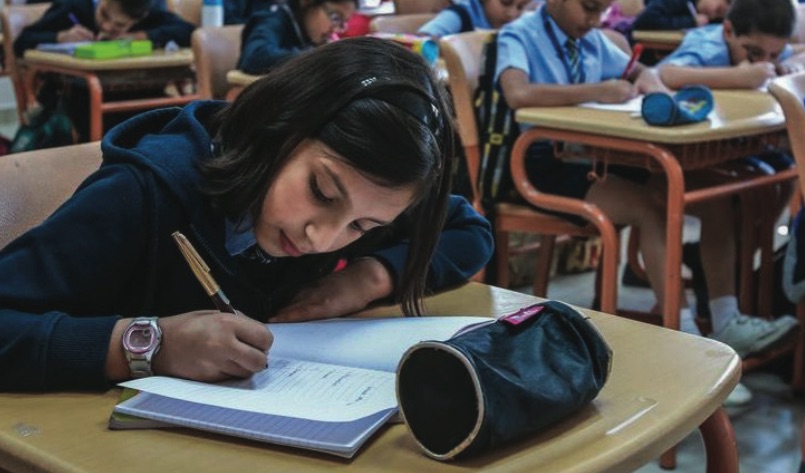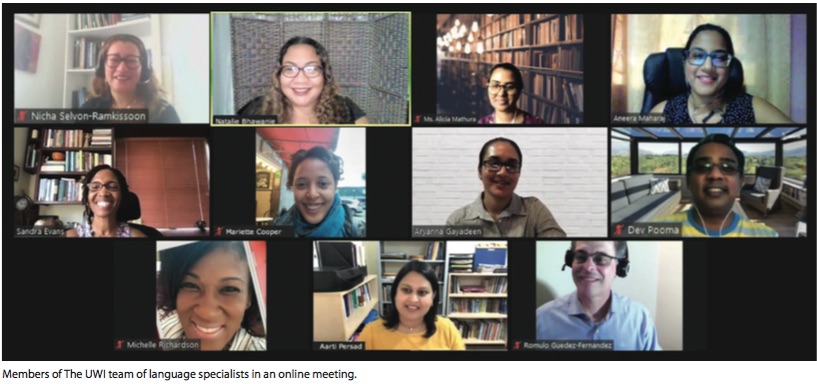In the middle of the 19th century, William H Gamble wrote, “Many distinct peoples go to make up the population of Trinidad. There are men from all quarters of the globe, and with but little exaggeration, it may be said that, in Trinidad, all the languages of the earth are spoken.”

It was from this turbulent island Tower of Babel that Trinidadian English Creole – a unique Creole language which resulted from the contact of various languages of the Americas, Africa, Asia, and Europe – was first born.
Nowadays, Trinidadian English Creole (TrinEC) and Trinidad and Tobago Standard English (TTSE) exist, relatively harmoniously, alongside one another, and while this tends to function quite well in society at large, it does present some unique challenges to both teachers and young learners with regards to the acquisition of TTSE.
Primary school teachers across the nation have reported that many students have trouble distinguishing between TrinEC and TTSE, and that this often leads to difficulties not only in the acquisition of TTSE, but in learning other subjects which are taught through the medium of that language.
“How the children speak at home is reflected in their writing; in most cases Dialect,” noted one primary school teacher in an anonymous survey conducted by a team of language specialists.
This team consisted of Aarti Persad, Alicia Mathura, Aneera Maharaj, Aryanna Gayadeen, Dev Pooma, Mariette Cooper, Michelle Richardson, Natalie Bhawanie, Dr Nicha Selvon-Ramkissoon (an Assistant Professor at the University of Trinidad and Tobago), Dr Sandra Evans, and Rómulo Guédez-Fernández.
The problem lies not necessarily in the use of Dialect itself, but in the inability to distinguish between the two languages, which leads to a weakened ability on behalf of the students to express themselves in TTSE. In an effort to support primary teachers, The UWI Department of Modern Languages and Linguistics (DMLL), in partnership with the Catholic Education Board of Management (CEBM) and UNICEF, hosted a series of online workshops in 2021 to train 98 primary school teachers in the use of a teaching methodology called Content and Language Integrated Learning (CLIL).
CLIL is an approach to teaching languages whereby students are taught both content and language at the same time through the use of a second language. In other words, CLIL promotes the development of cognitive and language skills and sees all class time as an opportunity to help students enhance their skills in the target language. It also relies on the use of the mother tongue.
“CLIL offers a harmonious use of various techniques to teach subject areas such as math, science, or social studies through the use of a second language,” says Rómulo Guédez-Fernández, a lecturer in DMLL.
While CLIL is usually used in settings where two standard languages are present, the team at UWI use CLIL to teach in a setting where a Creole language exists alongside TTSE.
“CLIL has been around for a long time, but this seems to be the first time that it is being used in a situation where the first language is a Creole language,” says Guédez-Fernández.
While the UWI language specialists have creatively adapted CLIL to the linguistic situation in Trinidad, the original target group were actually migrant children, most of whom had come to Trinidad with their parents due to the ongoing crisis in Venezuela.
“We were initially planning to use this method to teach migrant children alongside local children, but because of delays in allowing them to enter the public school system, we had to shift gears. We realised that teachers could still use the CLIL approach in their lessons to help local children to improve their own language competence in Standard English,” says Natalie Bhawanie, who is an English as a Second Language (ESL) tutor at The UWI's Centre for Language Learning.
“It was in the process of preparing our ESL-CLIL training courses for these teachers who would be working with the migrants that we first began to utilise the CLIL teaching methodology,” says Guédez-Fernández, “but it has turned out to be very relevant to the unique linguistic situation here in Trinidad and Tobago.”
Guédez-Fernández also stresses the importance of dialogue between the various levels of the schooling system:
“The most rewarding part of this process has been the ability for us, who work at the university level, to collaborate with primary school teachers. We have been working alongside some very devoted teachers, and I would really like for more collaboration to take place between The UWI and the various levels of education in the future.”
He said the UWI language specialists wished to thank the many primary school teachers in T&T who took part in the surveys and ESL-CLIL workshops. They also gratefully acknowledged the support they received from UNICEF, the Catholic Education Board of Management (CEBM) and the Pan American Development Foundation (PADF).
“Primary school education is really the foundation for all of the other educational steps,” added Guédez-Fernández, “so the more collaboration that there can be between the different levels, the better. We hope that CLIL will continue to be an effective way for teachers to improve their students' competence in Standard English, develop their students’ cognitive skills, broaden their students’ content knowledge, and increase their students’ cultural awareness.”